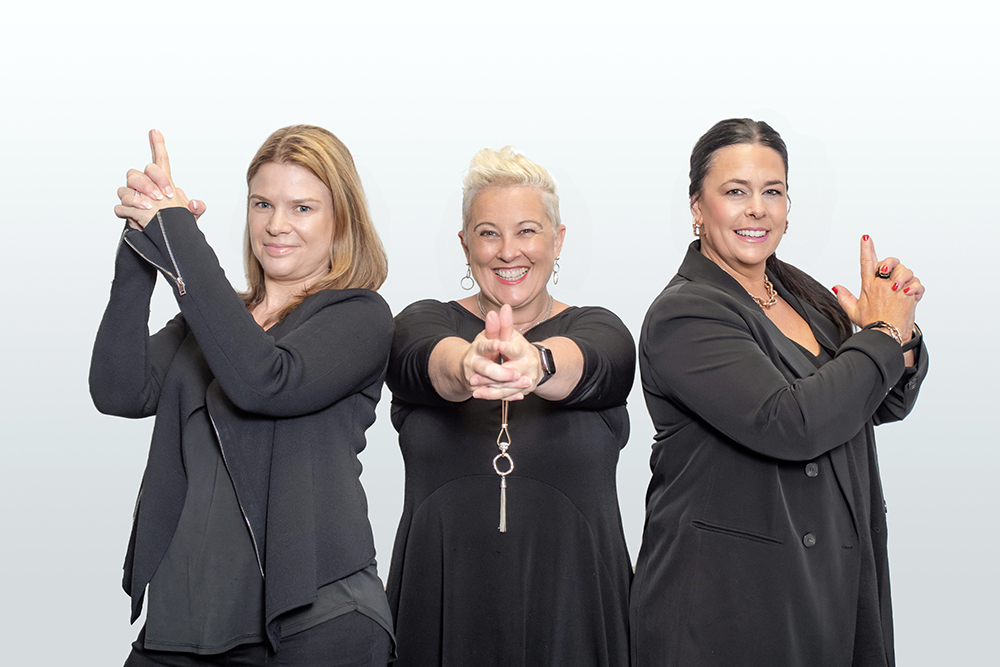When leading a team, capacity is (or should be) a major focus. Ensuring you have the right balance in terms of headcount and skill set that allows your business to deliver services or products to clients is essential. It’s stating the obvious really but if you don’t have your eye on work capacity, how would you know that you have the right number of people doing the right type of work?
Further to this, how would you know that you need to increase or decrease your headcount if you don’t know who’s working hard or who’s hardly working?
Answer this, hand on heart, do you know who in your team is busily working away productively and who is simply busy being busy?
In the modern business landscape, the notion of "busyness" has taken a concerning hold. The prevalence of performative work and the rise of the "loud labourer"—those who conspicuously advertise their workload—pose significant challenges to team morale, company culture, and genuine productivity.
The Rise of the Loud Labourer
The "loud labourer" is a term coined by André Spicer a Professor of Organisational Behaviour at the Bayes Business School at City, university of London. Professor Spicer defines loud labourers as employees who go out of their way to make their busyness known. They are vocal about their workloads, frequently highlighting how much they have on their plate, and how late they will need to work or what they will have to do at home after dinner.
These declarations of busyness are often made with the intent of garnering recognition and praise. While it may seem like these employees are highly dedicated and hardworking, their performative displays of busyness often mask a lack of real productivity.
We’ve all worked with the person who repeatedly tells you how many emails they have and how full their inbox is, and they make a lot of noise about working late or after hours as a result. The question you have to ask is how much value is all that emailing delivering to the business. Is it just fluffy subscriptions and updates or is it related to project based and/or revenue driving work? There is a difference.
There is also a difference between someone mentioning that they are overwhelmed by all their emails on occasion and the person who talks about it ad nauseum as if they are some sort of war hero from working through the communications! To be clear, sometimes your people do need to have a little vent about their workload or a momentary feeling of being overwhelmed. That’s not performative, that’s just getting something off your chest and sharing an experience before moving on.
Loud labourers can significantly disrupt the workplace environment. Their constant proclamations about their busyness can create a sense of competition among colleagues, leading others to feel pressured to also demonstrate their busyness, regardless of actual output. This environment fosters an unhealthy culture where the appearance of being busy is valued more than actual contributions and results.
The Pitfalls of Rewarding Performativity
It goes without saying – but we’ll say it anyway - leaders play a crucial role in shaping organisational culture. When performative work is rewarded by the business leaders, either through recognition, promotions or the like, a clear message is sent that being visibly or audibly busy is more important than being genuinely productive. This approach has significant detrimental effects:
Encourages inefficiency: When employees realize that appearing busy is rewarded, they may engage in inefficient work habits. Instead of focusing on completing tasks effectively and efficiently, they may prolong tasks or create unnecessary work to maintain the appearance of busyness.
Demotivates genuine performers: Employees who focus on producing high-quality work without seeking attention may feel undervalued and demotivated when they see their performative colleagues receiving accolades. This can lead to decreased morale and engagement among truly productive team members.
Fosters a toxic culture: A culture that prioritises busyness over productivity can become toxic, in turn fueling burnout and high turnover rates. Employees may feel compelled to work longer hours, take on more tasks than they can manage or fill their time with busy work at the expense of productive work that delivers on the business objectives and is also fulfilling to the worker. Or they veer to the other end of the spectrum and lose all motivation and give “quiet quitting” a go. Whichever way they jump, it’s no good for your business or your people.
Erosion of trust: In a culture where performative work is rewarded, trust among team members can erode. Employees may become skeptical of their colleagues' intentions and question whether their busyness is genuine or merely a show. This lack of trust can hinder collaboration and teamwork.
Reduced innovation: Creativity and innovation thrive in environments where employees have the mental space to think critically and explore new ideas. A culture that places importance on busyness and rewards the loud labourers over the quieter, more productive employee can lead to the stifling of creativity, as employees may be too preoccupied with maintaining the appearance of being busy to think outside the box.
The role of leaders in shaping culture
Naturally, leaders have a profound influence on organisational culture. Choosing to foster a culture that values productivity over busyness, leaders can create a more positive and effective work environment for all. And really, isn’t that what we all want to build? A culture that drives our business – and our people – forward? Let’s take a look at ways we can put productivity back in front of busyness:
Set clear expectations: Clearly communicate what constitutes productive work and set measurable goals that focus on outcomes rather than activity. Ensure that employees understand that the quality and impact of their work are more important than the sheer volume of tasks they complete. These goals need to be tied to the goals of the business – both short and long term. They provide a focus for your team that helps everyone keep to the course that has been set. Remember to put a value on creative thinking – sometimes this is overlooked when evaluating outcomes.
Recognise and reward genuine productivity: Develop recognition and reward systems that highlight genuine productivity and contributions. Celebrate employees who achieve results, demonstrate innovative thinking, and contribute positively to the team and company. We encourage you to celebrate success but make sure those wins are related to the reaching or exceeding the goals of the business or even an innovative idea that improves processes or creates a new revenue stream for example. Whether that’s winning a new client or closing out a deal that took two years of hard work – big or small – understand and recognise the work it took to get the end result.
Lead by example: Leaders set the tone for acceptable behaviour, so you need to model the practices you wish to see in your teams. By engaging in effective work habits, managing workloads, prioritising business goals and avoiding performative busyness, leaders can set a powerful example for their employees.
Promote work-life balance: Encourage employees to maintain a healthy work-life balance. Provide resources and support for managing workload and stress and create an environment where taking time off and setting boundaries is respected and valued.
Foster a culture of trust and collaboration: Build a culture where trust and collaboration are central. Encourage open communication, where employees feel comfortable discussing workload and challenges without fear of judgment. Promote teamwork and recognise collective achievements.
Beat Busyness, Boost Productivity
To move away from a culture of busyness and towards genuine productivity, leaders can encourage new habits and support additional training where required. A few suggestions to consider include:
Encourage deep work: Promote periods of uninterrupted work time, where employees can focus on complex tasks without distractions. Some companies have prescribed deep work time where no one can schedule a meeting, everyone stays off email, calls go to voicemail and it is head down and backside up for a concentrated hour of focused work on a key project or work that delivers on company goals.
Time management training: Not everyone is great at managing their time and a little training or some practical suggestions may deliver the lightbulb moment that helps an individual use their time more wisely. Time management is not a one size fits all solution as it can depend on the personality of the employee, the type of work they do and the stakeholders they need to engage. What training in this area can do though is open someone up to solutions they can try as they determine which options help them focus best on the work that delivers the most for the business.
Implement project management tools: Project management tools can be as simple as a Trello board with defined swim lanes allowing everyone to keep up to date with regular or project based work. This can minimise the time spent interrupting others for updates or lengthy (and often unread) status update emails. Such tools can be as basic or complex as required by the type of work your team does and can help keep everyone on track and accountable for their part in the process.
The HR Staff n’ Stuff team are big fans of Trello and have found it helps reduce repeated communications, lost communications and everyone knows where to go for information meaning they don’t need to interrupt or wait on a colleague for an update.
Does it really need to be a meeting?: Can it be an email, a chat or an update on Trello? We all know the pain of an unnecessary meeting and the interruption to workflow it can cause, so make sure it’s really necessary before you slap it in everyone’s calendars!
Assess workload distribution: Workloads ebb and flow so as a leader, you need to check in to see if anyone is overloaded and if that capacity strain is temporary or if they have tasks that need to be reassigned. Same goes for an employee who may be left twiddling their thumbs due to a project ending, a client leaving or efficiencies have opened up more capacity.
Shifting the focus from busyness to productivity, business leaders can create healthier, more effective, and more innovative work environments. This benefits individual employees and contributes to the long-term success and sustainability of the business.
A thought to end on
I’ll leave you with this thought from John Wooden – a very successful US basketball coach – that is just as applicable to business as it is to sport:
Don’t mistake activity for achievement. To produce results, tasks must be well organised and properly executed; otherwise, it’s no different from children running around the playground—everybody is doing something, but nothing is being done; lots of activity, no achievement.
As always, if you need support assessing your team structure, capacity, job descriptions or looking at ways to improve productivity, the HR Staff n’ Stuff team is here to help.







